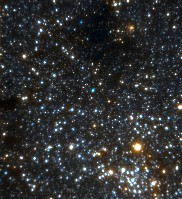 Galactic nuclei hosting massive black holes (BHs) are thought to be the
scene of spectacular stellar dynamical events. Stellar collisions and
disruptions of stars by the central BH may not only impact the
structure of the cluster but should also trigger flares of radiation
when the released gas accretes onto the BH. Furthermore, captures of
compact stars by the central BH through emission of gravitational
radiation will likely produce conspicuous sources for the future
spaceborne interferometer LISA. Because of the complex interplay between
all the important physical processes, which also include 2-body
relaxation and stellar evolution, the study of the stellar dynamics of
galactic nuclei requires high-resolution numerical simulations. In this
talk, I will present results from a new Monte Carlo code specifically
developed to study these problems, and discuss possible future
improvements and developments of this work.
Galactic nuclei hosting massive black holes (BHs) are thought to be the
scene of spectacular stellar dynamical events. Stellar collisions and
disruptions of stars by the central BH may not only impact the
structure of the cluster but should also trigger flares of radiation
when the released gas accretes onto the BH. Furthermore, captures of
compact stars by the central BH through emission of gravitational
radiation will likely produce conspicuous sources for the future
spaceborne interferometer LISA. Because of the complex interplay between
all the important physical processes, which also include 2-body
relaxation and stellar evolution, the study of the stellar dynamics of
galactic nuclei requires high-resolution numerical simulations. In this
talk, I will present results from a new Monte Carlo code specifically
developed to study these problems, and discuss possible future
improvements and developments of this work.
Tuesday, October 15th at 4:00 p.m.
Seminar is scheduled to be held in F235 of
the Tech Building, due to current renovations at Dearborn Observatory.
Refreshments will be served at 3:30
|






